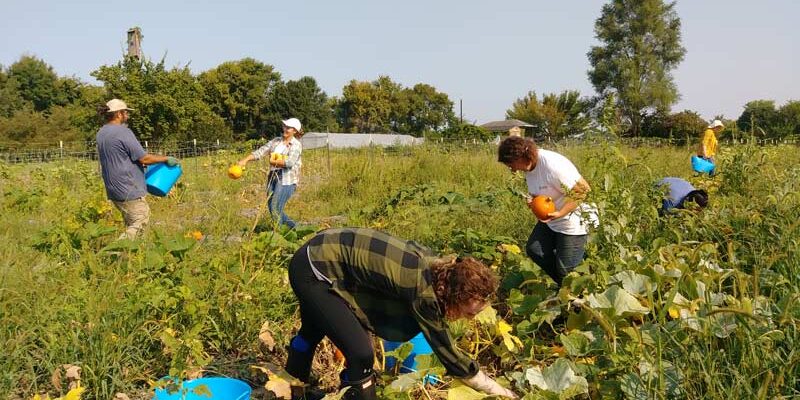What does winter look like on an alpaca and chicken farm?
In may ways, it can look like the same routine, but there are some subtle differences and in a few cases, some not subtle at all differences (alpacas … in JACKETS?!).
For chores, we feed hay year-round in the morning and afternoon. However, in the winter when there is not much grass available, we will supplement with more hay and we will add a bit of alfalfa as a bonus.
It can be hard to tell the difference but the alpacas certainly know and if you look at it, you can see that the alfalfa has more sterns and leaves and has a different smell.

That is because it is actually a legume and not a grass hay at all. Alfalfa is a good source of quality protein, is naturally rich in other vitamins A, C, E and K and minerals like calcium that alpacas need.
However, too much protein rich forage is not good for alpacas so we have to be sure that it is mixed with grass hay so they don’t get too much.
Water is always important to all living things, and the alpacas and chickens are no exception. So, winter time prep means switching to heated water buckets and spending time chiseling out blocks of ice when it gets too cold for the heating elements.
When that happens, it’s time to bring out the alpaca jackets and get the wood furnace going for the main alpaca barn. If you have been by the big alpaca barn, you might not have noticed the green wood stove outside the fence.
It is there for when it gets to be single digits for multiple days in a row. This helps the older alpacas whose fleece is not as dense and does grow as fast as it used to or for the fall crias (babies) that may now have as much fiber yet.
While the wood furnace does take the chill off, it isn’t necessarily warm in the barn so sometimes jackets are necessary for those who look to be feeling the effects of the cold temperatures. As if alpacas weren’t cute enough without adding outerwear.
For chicken care in the winter, we add a lot more straw to their floor and make sure that we plug up any drafty spots. We also make sure that they have perches to get off of the ground when they are sleeping at night or if they want to warm up during the day.
They like to huddle together for extra warmth. We also give them just a little “scratch” which is a mix of seeds and grains such as corn, oats, wheat and barley. Scratch grains can encourage activity and digestion of scratch grains also produces heat.
As for the White Violet Center staff, we make sure they have all they need no matter what the weather offers and we layer, layer, layer! Think of Randy from A Christmas Story but in this case, you really have to be able to ‘put your arms down’ (and up and down and up again).
There is always something a little magical when you go around doing chores with the snow on the ground and falling all around you but each winter it seems we are getting less and less of the snow and occasionally will get those single digit temperatures.
The farm has certainly seen the devastating results of not having winters with extended hard freezes and snows.
Each year we are seeing increased bug pressures as well as increased deer and raccoon populations that have wreaked havoc with the garden and the chickens.
We will continue to navigate those changes as they happen but when the winter weather does make its appearance, we make sure we are prepared so all creatures are cozy and cared for.



Wonderful article. I love visiting the farm in all seasons and shopping fresh produce.
Such an interesting article, Tara! I have raised llamas so I understood so much of what you were saying! And there is not many things cuter than an alpaca…or llama…in a jacket! Stay warm!
Thanks, Tara, it’s good to know what extra care goes into keeping our chickens and alpacas healthy! God bless all their caretakers!
Thank you, Tara, for the excellent article on the winter care of our cute alpacas, chicks and chickens . Glad to know more about how they are maintained during the cold months. A big shout out to those of our farm workers who daily show up to care for our animal friends and family!
This is a great article! Thank you for sharing!
Appreciate this article, Tara! And, appreciate you and your work on the farm.